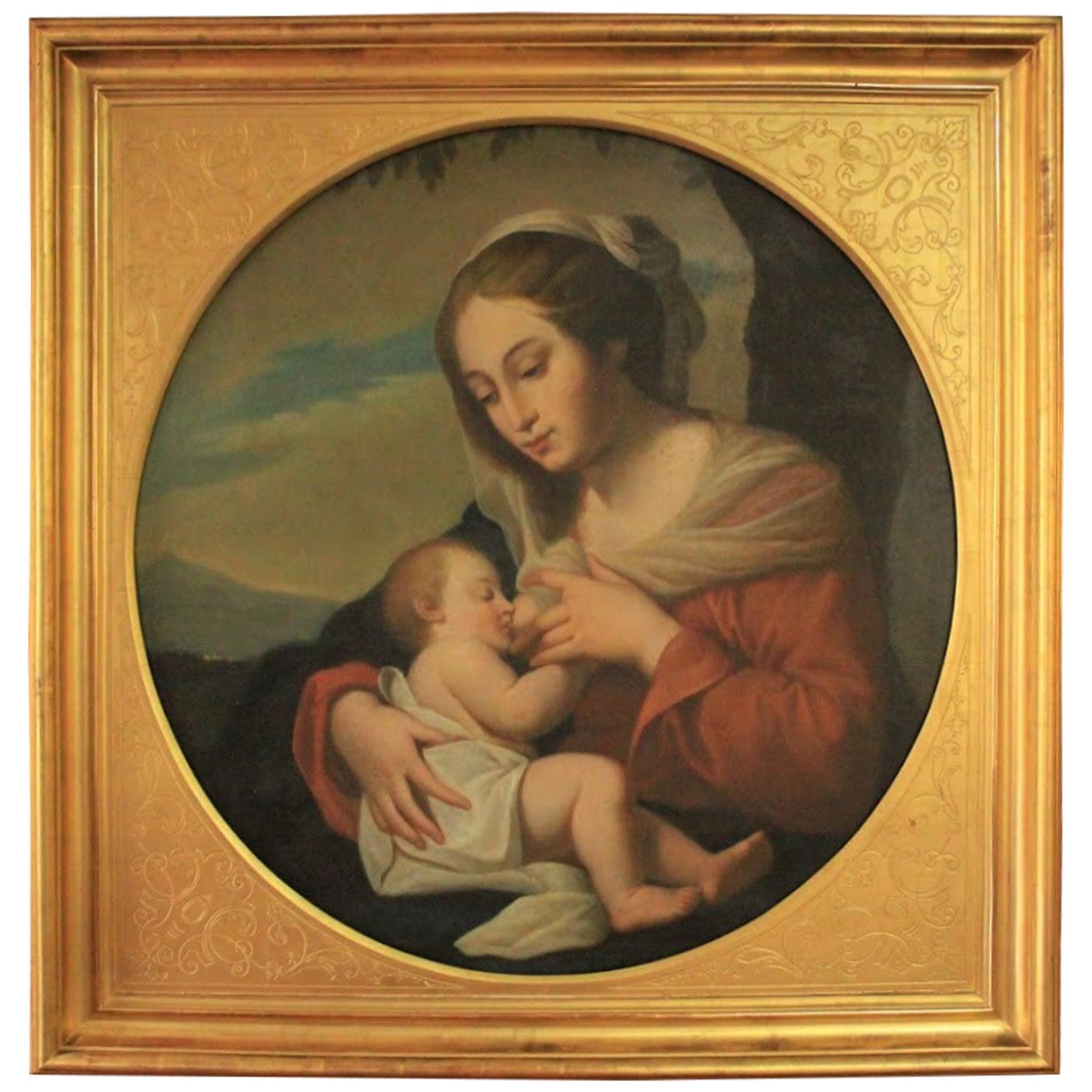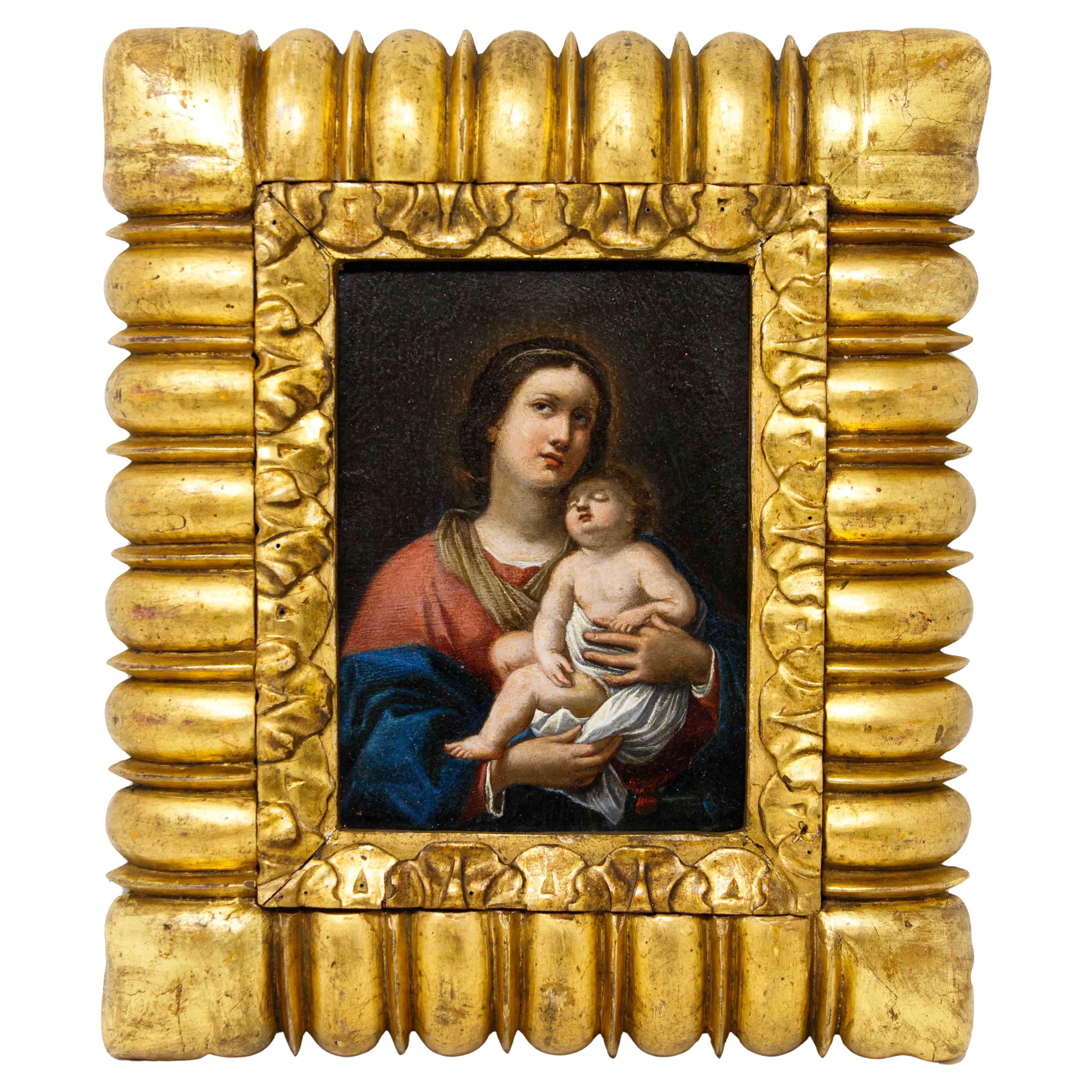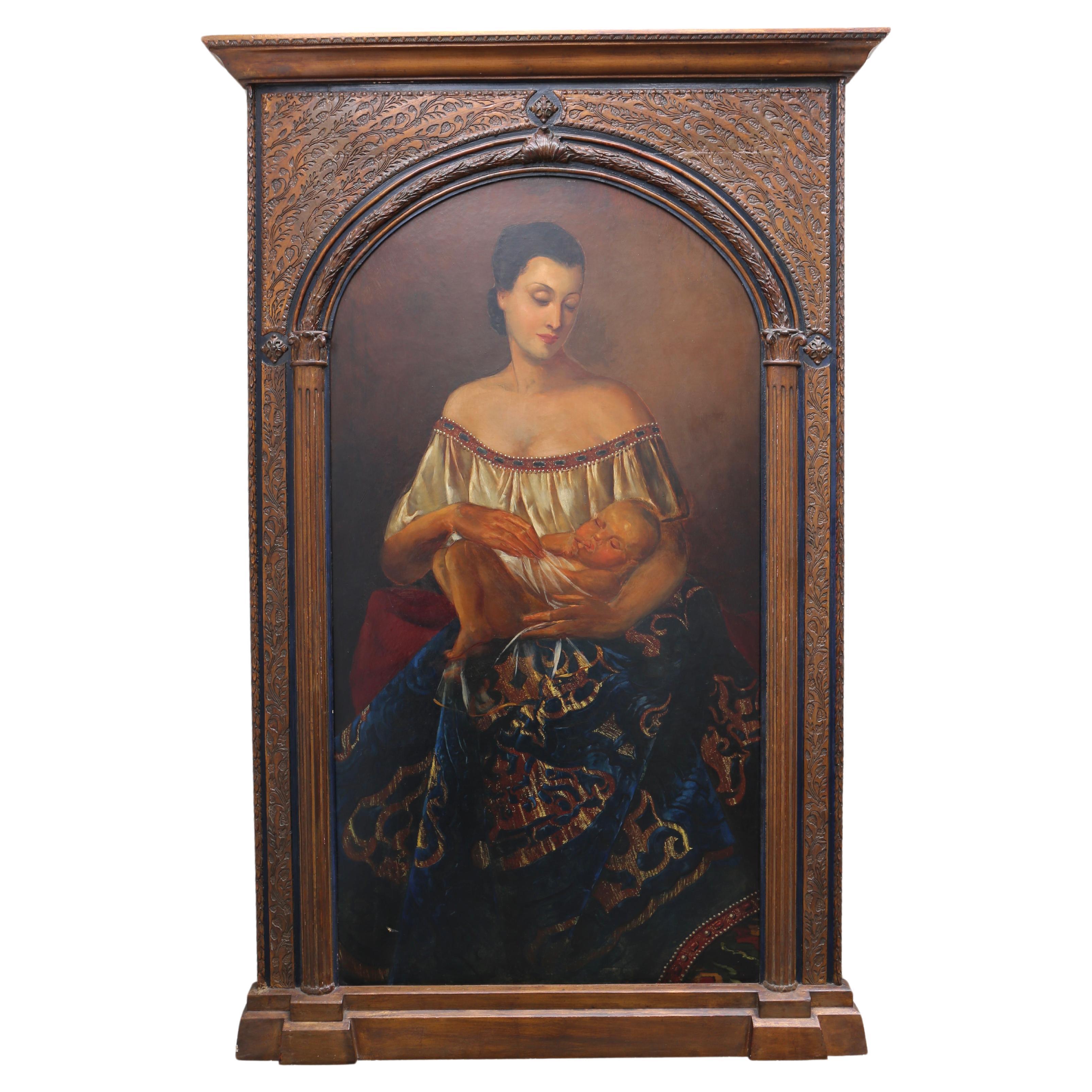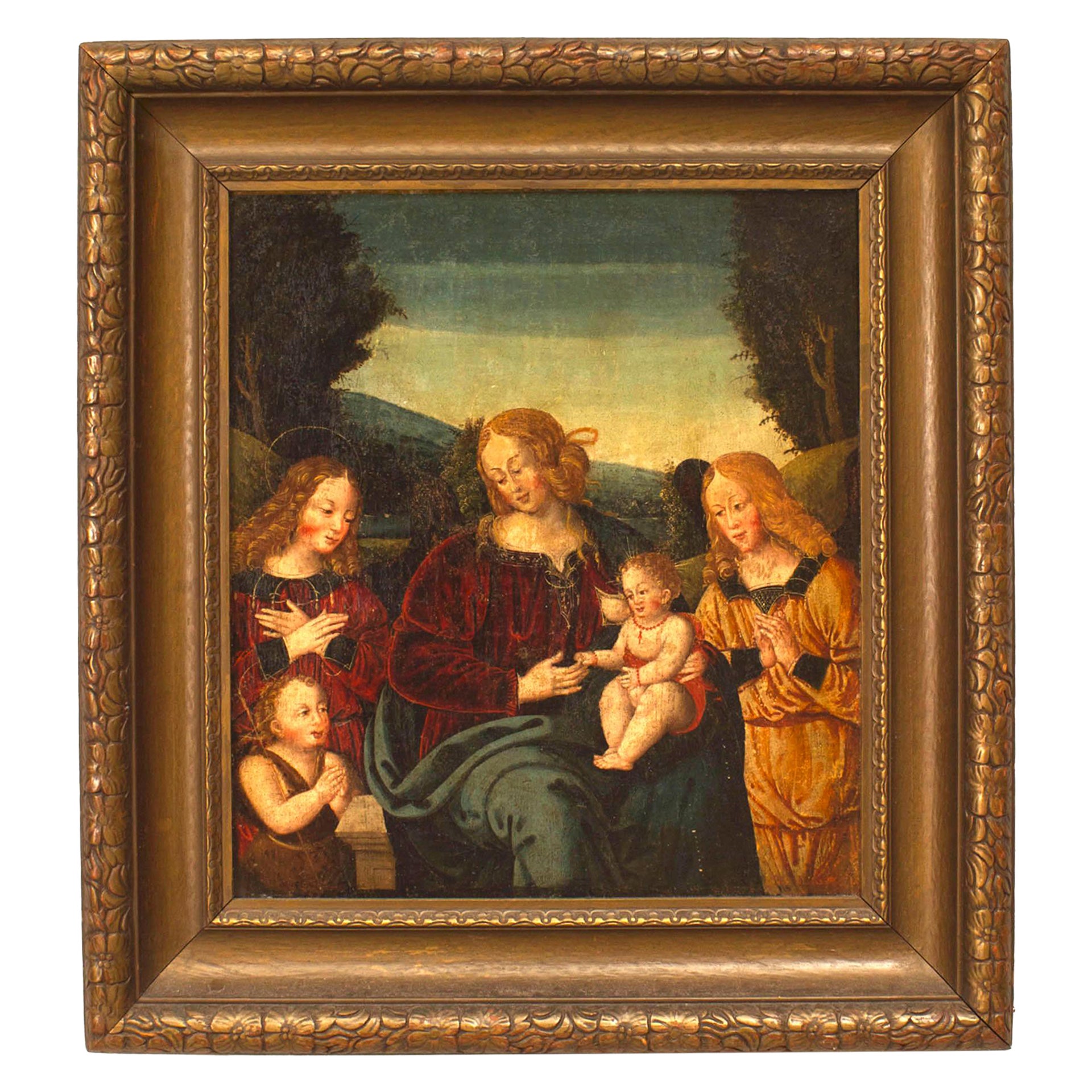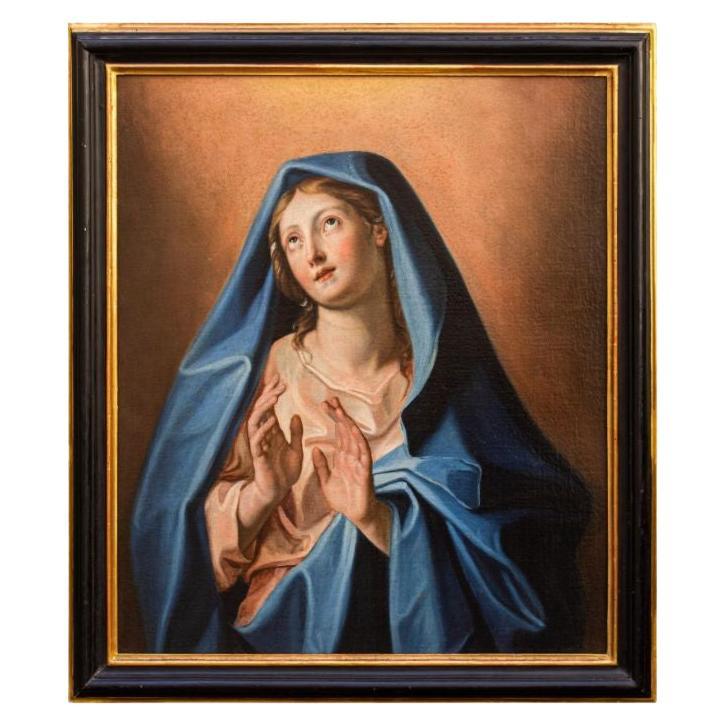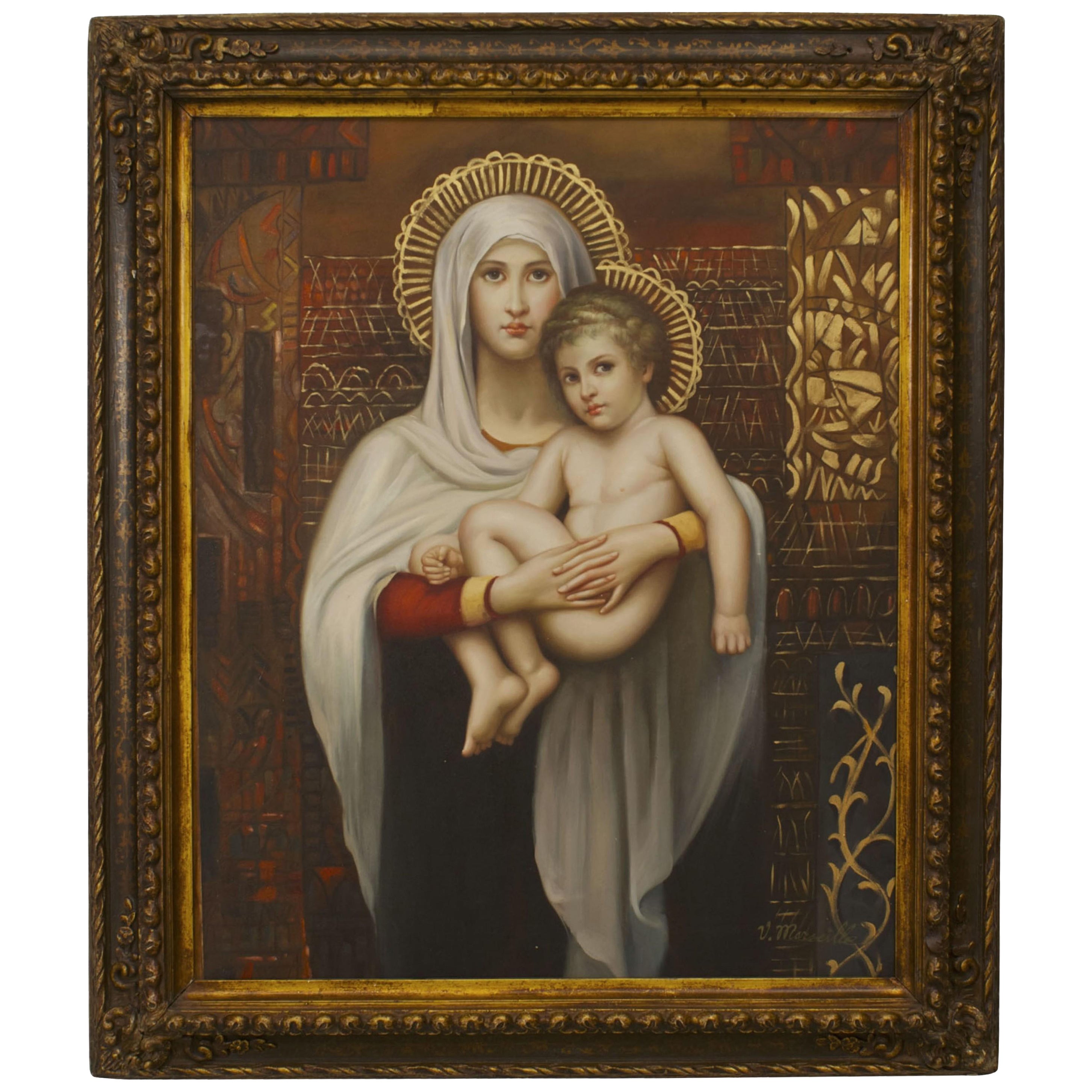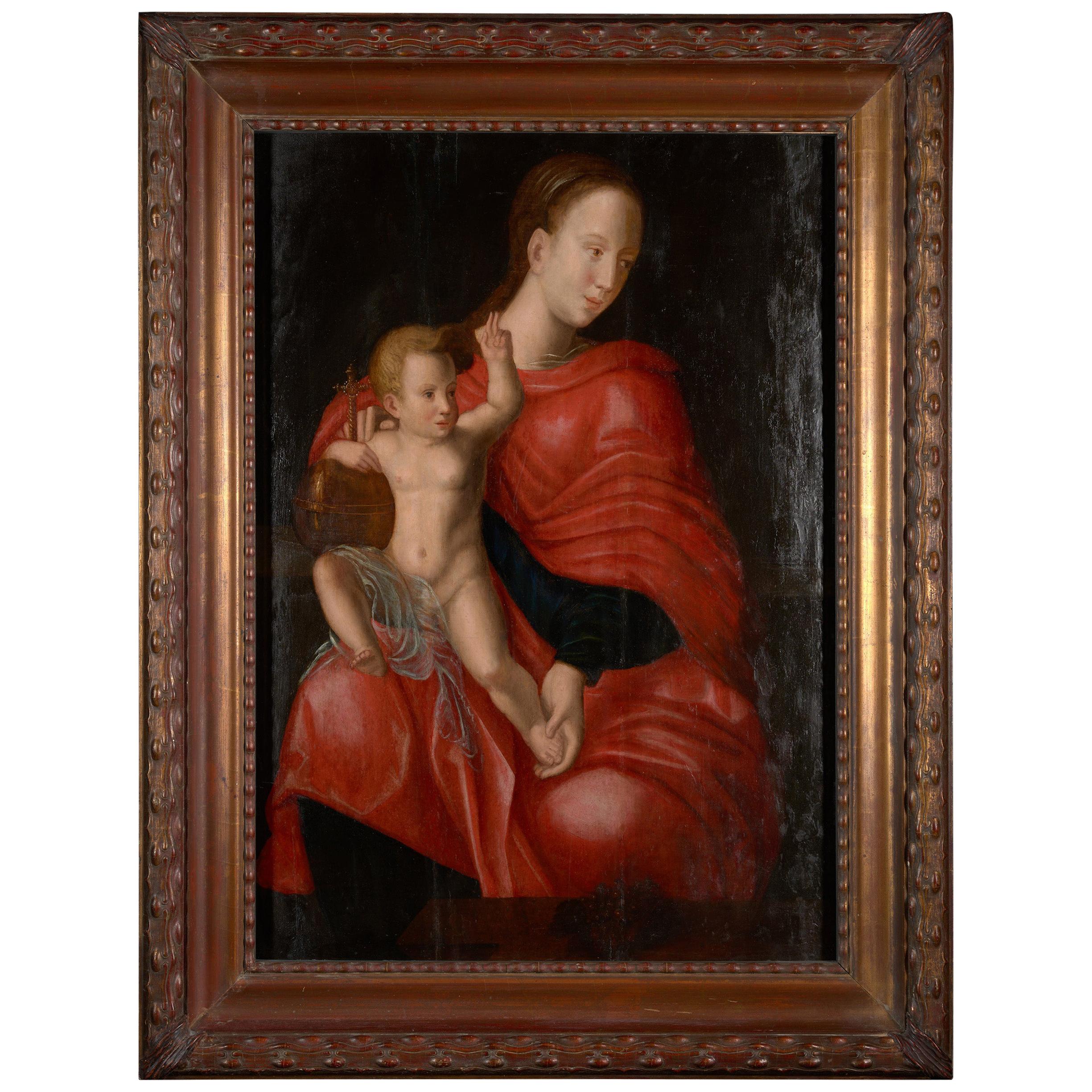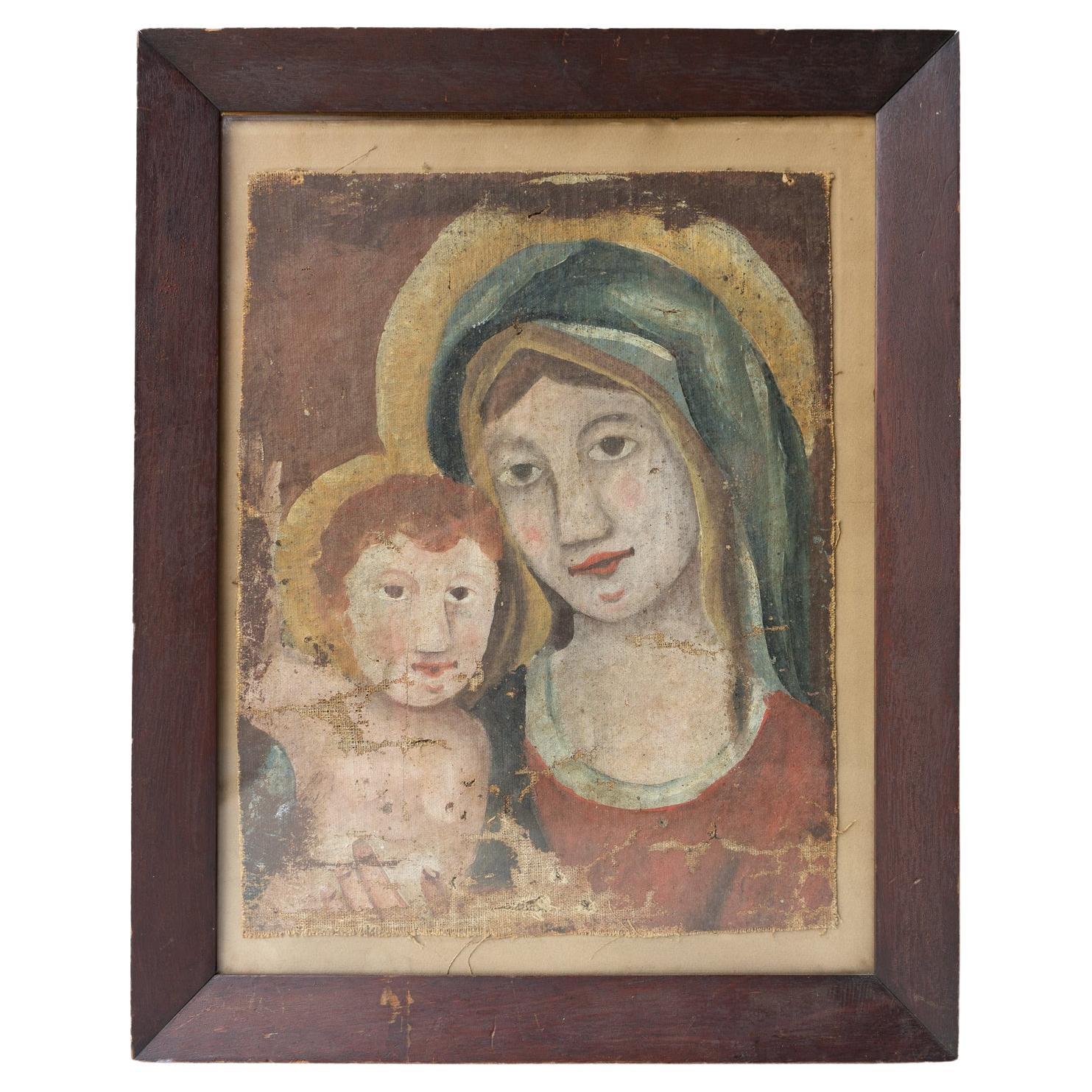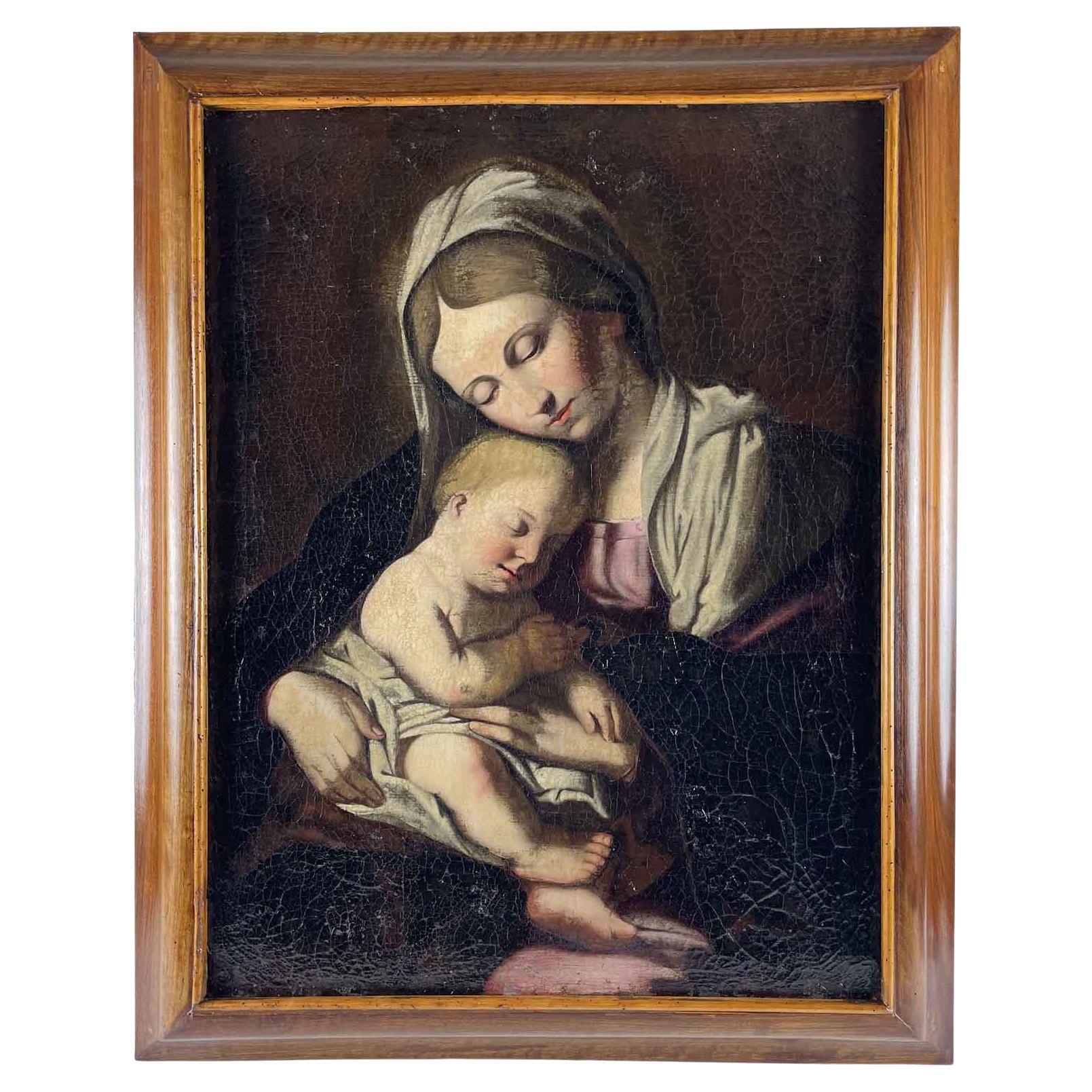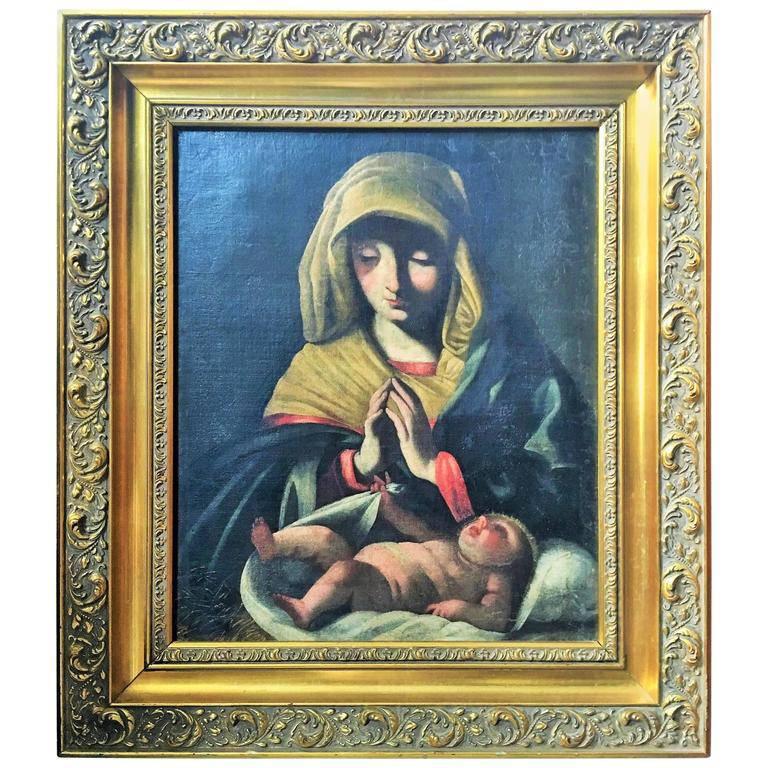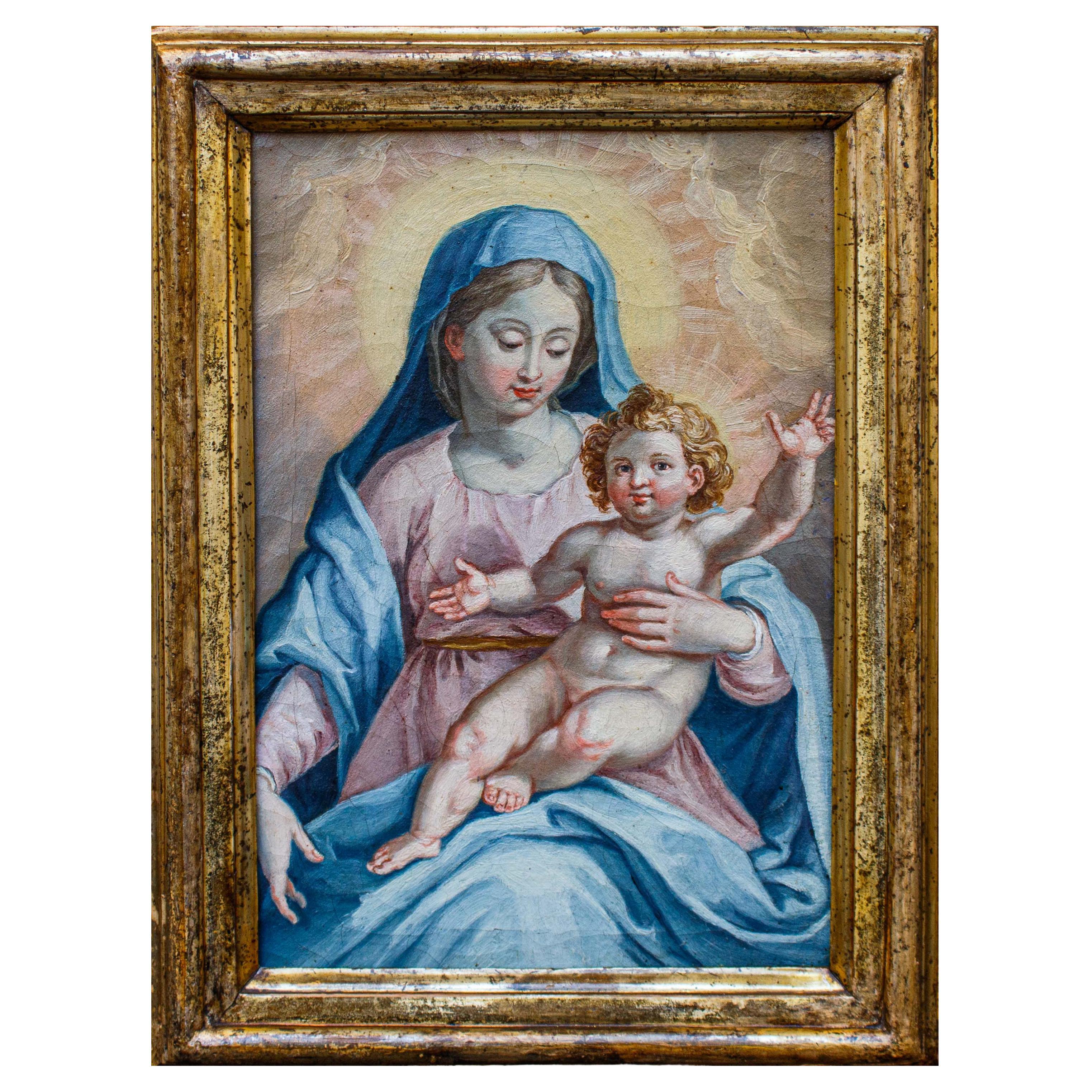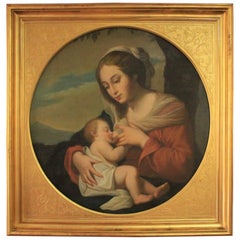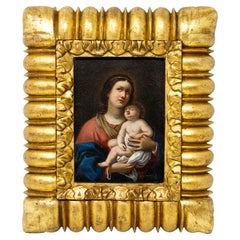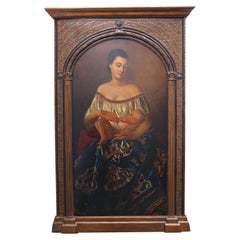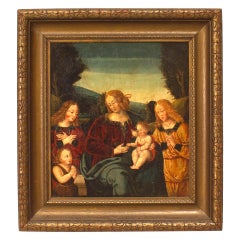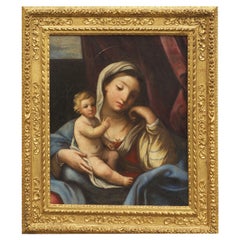
Roman School of Italian Painting Madonna and Child Early XVIII Century
View Similar Items
1 of 9
Roman School of Italian Painting Madonna and Child Early XVIII Century
About the Item
- Dimensions:Height: 29.14 in (74 cm)Width: 24.41 in (62 cm)Depth: 0.4 in (1 cm)
- Materials and Techniques:Canvas,Oiled
- Place of Origin:
- Period:
- Date of Manufacture:circa 1800
- Condition:Wear consistent with age and use.
- Seller Location:Spinea, IT
- Reference Number:1stDibs: LU6770229000942
Authenticity Guarantee
In the unlikely event there’s an issue with an item’s authenticity, contact us within 1 year for a full refund. DetailsMoney-Back Guarantee
If your item is not as described, is damaged in transit, or does not arrive, contact us within 7 days for a full refund. Details24-Hour Cancellation
You have a 24-hour grace period in which to reconsider your purchase, with no questions asked.Vetted Professional Sellers
Our world-class sellers must adhere to strict standards for service and quality, maintaining the integrity of our listings.Price-Match Guarantee
If you find that a seller listed the same item for a lower price elsewhere, we’ll match it.Trusted Global Delivery
Our best-in-class carrier network provides specialized shipping options worldwide, including custom delivery.You May Also Like
Italian School Painting of Madonna and Child
Located in Woodbury, CT
19th century Italian School oil on canvas of Madonna and child. Gilt frame.
Category
Antique 19th Century Italian Renaissance Revival Paintings
Materials
Canvas
Roman school, 17th century, Madonna and Child
Located in Milan, IT
Roman School, 17th century
Madonna and Child
Oil on copper, 15 x 11 cm
Framed, 26 x 22 cm
The small copper on display here depicts the Madonna and Child against a dark background...
Category
Antique 17th Century Italian Other Paintings
Materials
Copper
Italian Painting of Madonna and Child
Located in Antwerp, BE
Large 19th century Italian oil on board of Mother and child. Wooden frame.
This painting of mother and child is a beautiful and moving work of art that celebrates the timeless bond ...
Category
Antique 19th Century Italian Romantic Paintings
Materials
Plaster, Wood
$3,480 Sale Price
20% Off
Italian Renaissance Madonna and Child Painting
Located in Queens, NY
Italian Renaissance style (19th Cent) gilt framed oil painting of Madonna and child with 3 attendants.
Category
Antique 19th Century Italian Renaissance Paintings
Materials
Paint
Early 17th Century Roman School Praying Madonna Painting Oil on Canvas
Located in Milan, IT
Roman school, late 16th-early 17th century Praying Madonna
Oil on canvas, 81 x 69 cm
Frame 83 x 95.5 cm
A divine whiteness reverberates with vibrant luster on the maphorion of the present Virgin. The palpable iridescence that structures the thin rosaceous garment, woven with the same fresh light, produces a slight rustle when she takes her hands off. The Madonna in fact takes a prayerful pose, opening her palms to underline her fervent ecstatic intention; the white neck is rendered with perishable fullness of pigments, like the hands, perfectly alive, and the very shiny eyes. With fine shrewdness the artist of the present styles the Virgin's hair with thin white ribbons, exacerbating the purity. An evocative light falls gently on the bust, a materialized sign of divine glory.
The present can be traced back to the late Mannerist climate that prevailed in the capital after the emanation of the Tridentine council (1545-1563). The late Mannerist licenses that can still be seen there, such as the intense lyricism in the stylistic code adopted by the artist, are innervated in the new basic catechetical intent, which at the end of the century produced a certain figurative rigorism. The present, however, still responds to that extraordinary Roman dynamism that raised the capital to a bulwark for the entire mannerist lesson, matched only by a second artistic center, the Florentine one. The engaging carriage of the Virgin reflects the contemporary examples of Giuseppe Valeriano (1542-1596), a Jesuit painter, returning in the Marriage of the Virgin of the Roman Church of Jesus, as well as in the Madonna of Sorrows in the Recanati Altarpiece, equal ardor. But it is in the Assumption of the Virgin painted in four hands with Scipione Pulzone...
Category
Antique Early 17th Century Italian Paintings
Materials
Canvas
Italian Renaissance Madonna & Child Painting
Located in Queens, NY
Italian Renaissance style (modern) oil painting of Madonna & Child in antique gold carved frame
Category
20th Century Italian Renaissance Paintings
Materials
Paint
